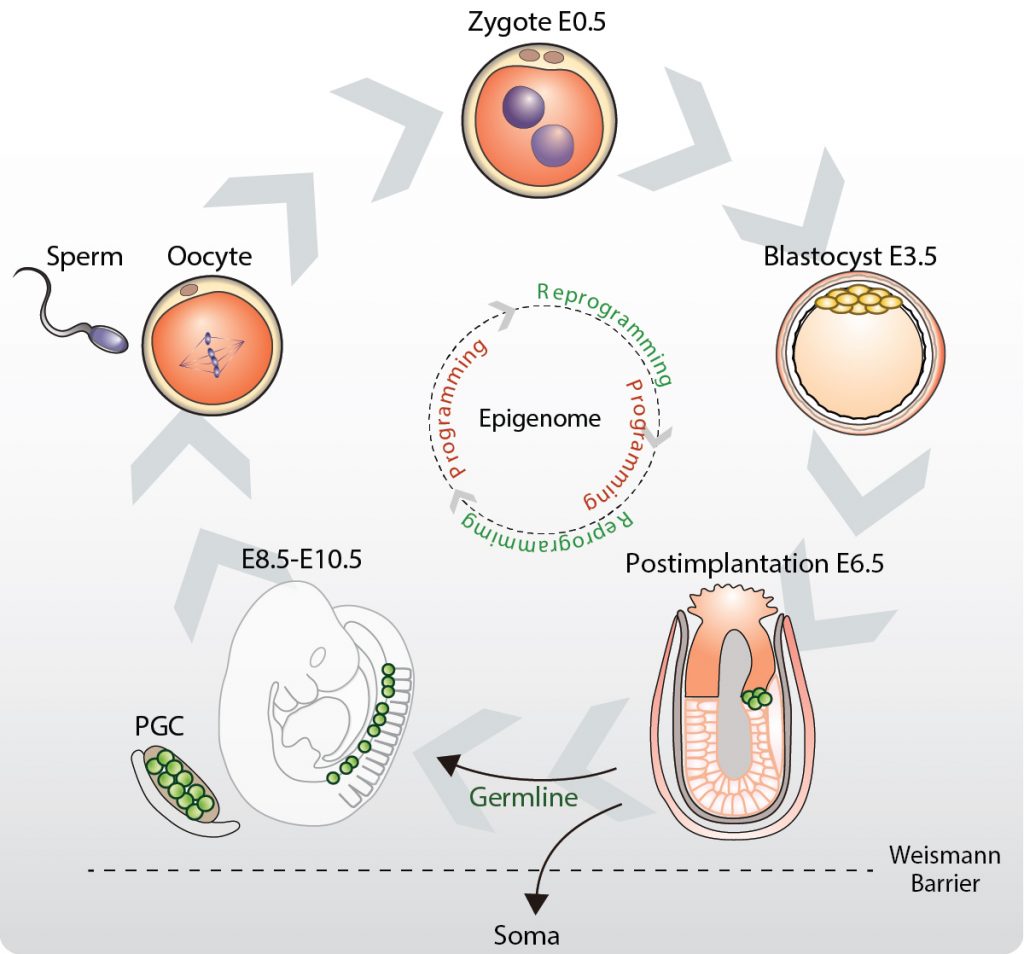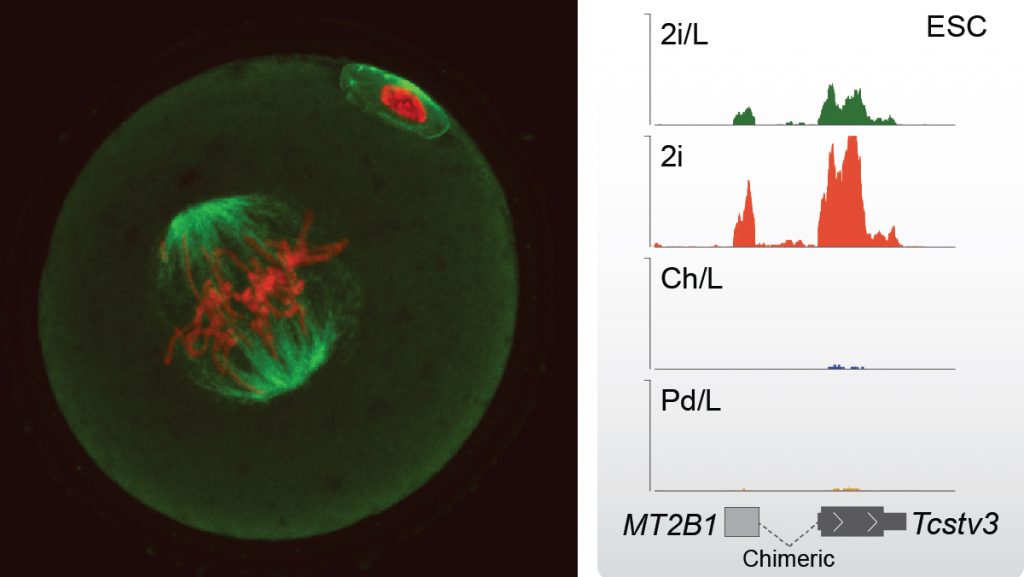
James Hackett
Group Leader, Deputy Head of Unit (EMBL Rome)
jamie.hackett [at] embl.it
ORCID: 0000-0002-6237-3684
EditEpigenetic mechanisms and intergenerational inheritance

Group Leader, Deputy Head of Unit (EMBL Rome)
jamie.hackett [at] embl.it
ORCID: 0000-0002-6237-3684
EditEpigenetic systems stabilise gene expression programmes and underpin cell fate decisions during development. Nevertheless, epigenetic memory must be reset between generations in order to reacquire totipotency: the capacity of an early embryo to give rise to all cell types. The zygote and nascent germline therefore undergo a process of genome-wide epigenetic reprogramming, including DNA demethylation and chromatin remodelling, which restores cellular potential. Our recent work has characterised the mechanisms that underpin this global epigenetic resetting, and has also identified specific systems that ensure correct epigenome priming for development (Gretarsson and Hackett, Nat Struct Mol Biol 2020). At the same time, we have found that some epigenetic information escapes reprogramming and is therefore epigenetically inherited by offspring (Hackett et al., Science 2013; Tang et al., Cell 2015). These loci are preferentially associated with human neurological conditions, and suggest one route for non-DNA sequence-based inheritance. Indeed, our ongoing work has shown that by altering the paternal environmental conditions prior to conception, we can influence the phenotype of subsequent offspring independent of their genotype.
We are broadly interested in the regulatory principles that govern epigenetic control of gene expression patterns, and the consequences of inheriting perturbed epigenetic states across generations.
There are three primary strands of research in our group:
To achieve this, we make use of mouse models and pluripotent ES cells, as well as a wide range of genetic and molecular tools. This includes state-of-the-art CRISPR genetic screening and epigenetic editing technologies, single-cell multi-omics, live imaging, and developmental biology approaches. We have also established a gnotobiotic facility to enable further studies into host–microbiome interactions.

